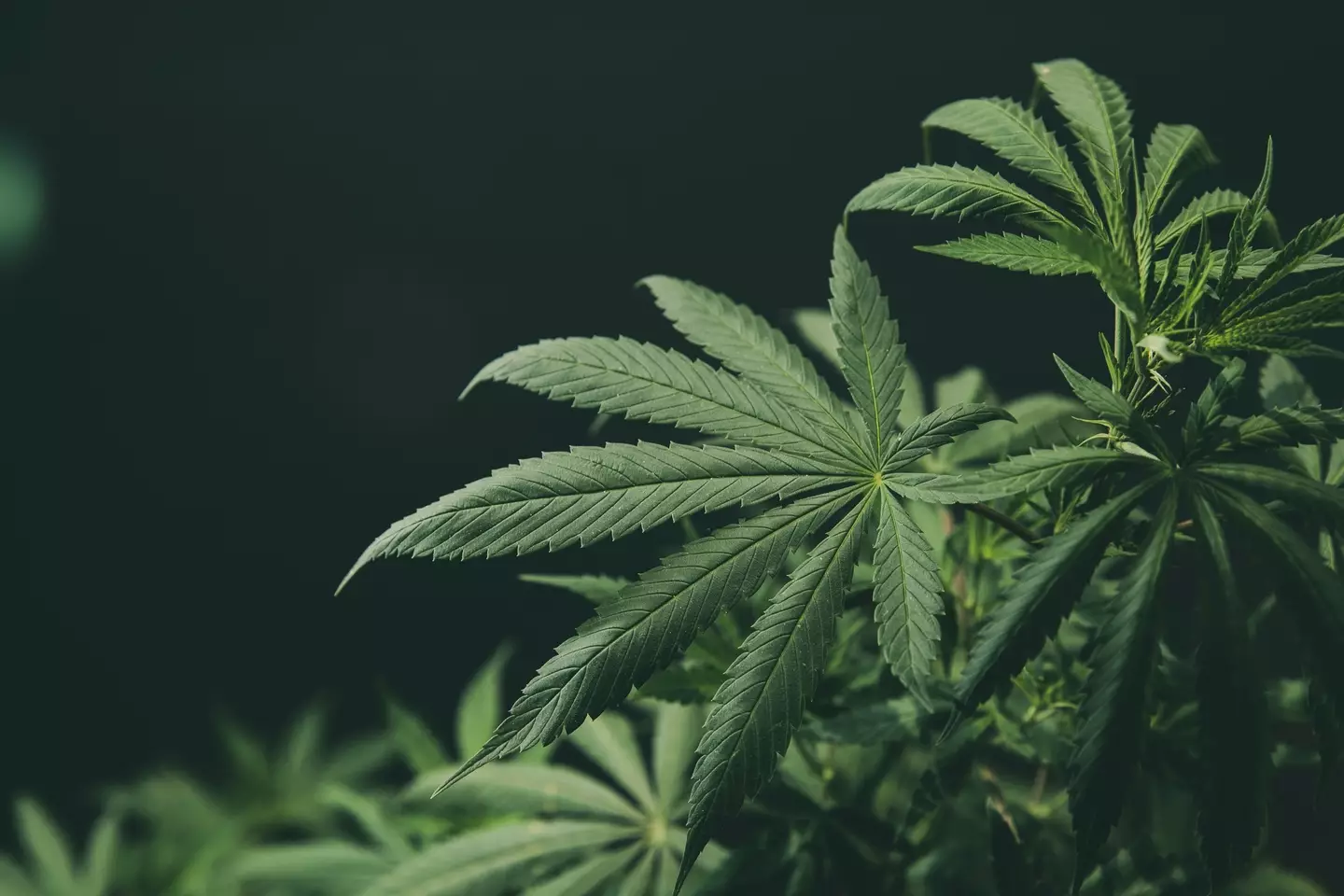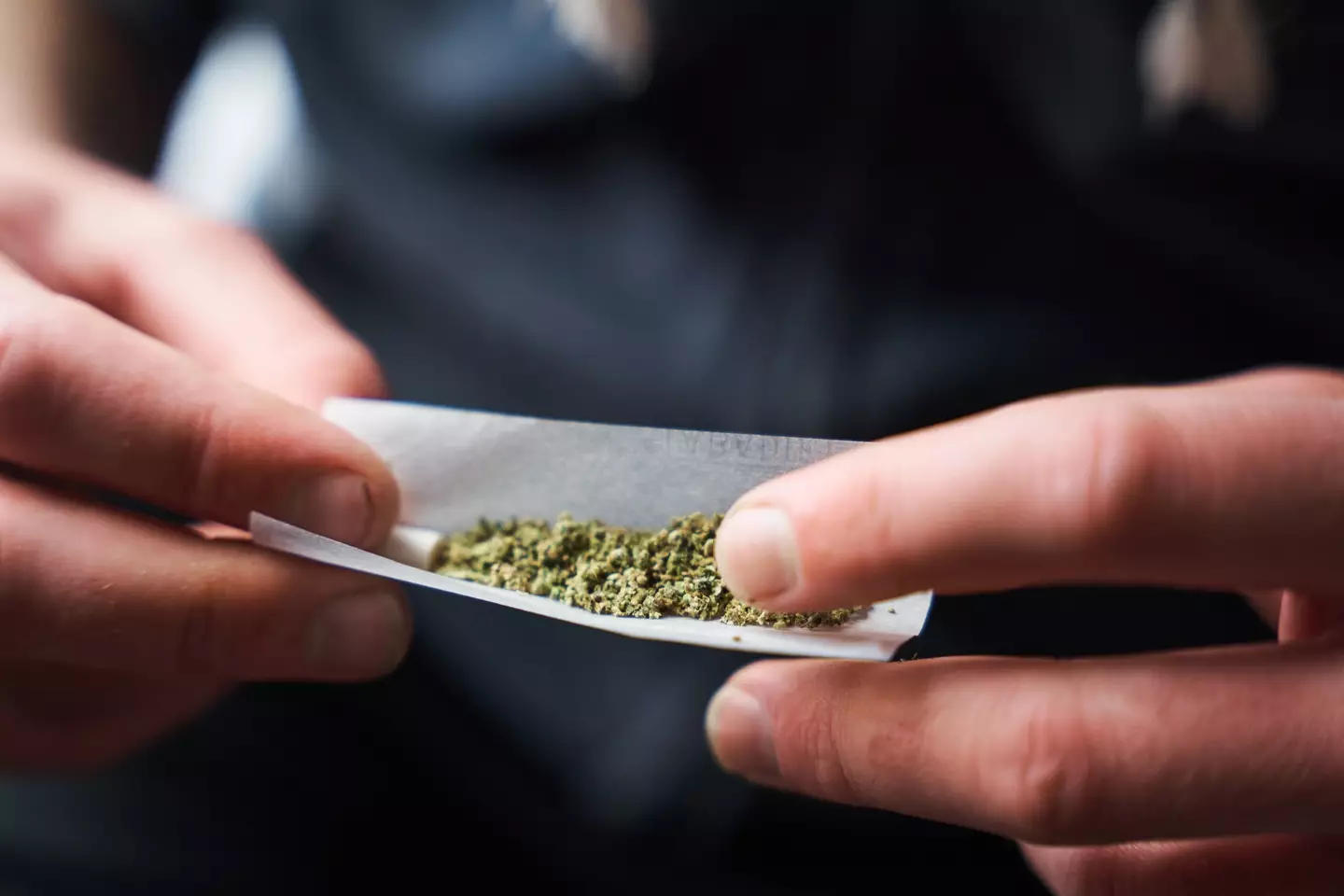The foundations of American drug policy are trembling as the nation stands on the precipice of a monumental change that could transform the legal landscape for one of the most controversial substances in modern history. Deep within the corridors of federal agencies, a quiet revolution is brewing—one that could fundamentally alter how the government, medical professionals, and millions of Americans approach a plant that has been demonized for over half a century.
This isn’t just another political promise or campaign rhetoric. Federal departments are actively working through complex regulatory processes that could reshape everything from criminal justice to medical research, from tax policy to personal freedom. The implications stretch far beyond policy papers and legal classifications, potentially affecting the daily lives of countless Americans who have lived under the shadow of prohibition.
What makes this moment particularly significant is the convergence of scientific evidence, changing public opinion, and political pragmatism. After decades of research conducted under restrictive conditions, new findings are challenging long-held assumptions about addiction, medical benefits, and public safety. The question is no longer whether change will come, but how quickly and comprehensively it will unfold.
The Current Legal Paradox
Cannabis exists in a legal twilight zone that defies common sense and creates confusion across the nation. While remaining federally illegal as a Schedule I controlled substance—a classification reserved for drugs deemed to have high abuse potential and no accepted medical use—the reality on the ground tells a dramatically different story.
Currently, 24 states have legalized marijuana for recreational use, while medical marijuana is legal in most states across the country. This creates a bizarre situation where state-licensed dispensaries operate legally under state law while technically violating federal statutes. Banks often refuse to work with these businesses, forcing many to operate on a cash-only basis. Employees of legal cannabis companies can still face federal prosecution, and interstate transport remains illegal regardless of state laws.
The Schedule I classification places marijuana in the same category as heroin, LSD, and ecstasy—substances the federal government considers more dangerous than cocaine, methamphetamine, and fentanyl, which are classified as Schedule II drugs. This classification has profound implications beyond simple legality. It severely restricts medical research, limits doctors’ ability to prescribe cannabis-based treatments, and creates barriers to banking and financial services for legal cannabis businesses.
The disconnect between federal and state law has created what legal experts call a “patchwork of enforcement” where federal authorities generally defer to state laws but retain the right to intervene. This uncertainty has stifled research, limited investment, and created legal jeopardy for millions of Americans who use cannabis legally under state law but remain vulnerable to federal prosecution.

Marijuana is classed as highly addictive (Getty Stock Images)
The Science Behind Cannabis Effects
Understanding what marijuana does to the human body requires examining a complex interplay of chemistry, biology, and individual physiology. The effects of cannabis are primarily driven by over 100 different cannabinoids, with delta-9-tetrahydrocannabinol (THC) being the primary psychoactive compound responsible for the “high” associated with marijuana use.
When cannabis is consumed, THC interacts with the body’s endocannabinoid system, a network of receptors found throughout the brain and body that helps regulate various physiological processes including mood, appetite, pain sensation, and memory. This interaction triggers a cascade of effects that can vary dramatically based on the method of consumption, the strain of cannabis, the user’s tolerance, and individual biological factors.
The method of consumption significantly affects both the onset and duration of effects. When cannabis is smoked or vaporized, THC rapidly enters the bloodstream through the lungs, with effects typically beginning within 2 to 10 minutes. The THC concentration peaks in the blood within 3 to 8 minutes for experienced users, though newcomers may experience delayed effects as their bodies adjust to the compound.
The First 20 Minutes: Immediate Physical Response
The initial physiological response to cannabis consumption is both rapid and measurable. Within minutes of THC entering the bloodstream, users typically experience an increase in heart rate of 20 to 50 beats per minute. This cardiovascular response can persist for several hours and is one of the most consistent immediate effects across different users and strains.
Simultaneously, blood vessels in the eyes begin to dilate, leading to the characteristic red eyes associated with cannabis use. This vasodilation occurs because THC affects blood pressure regulation, causing blood vessels to expand. While harmless, this visible sign often serves as a tell-tale indicator of recent cannabis use.
During this initial phase, users may also notice changes in their perception of time, with minutes seeming to stretch longer than usual. Coordination and reaction times begin to slow, though these effects are typically subtle in the early stages of intoxication.
Peak Effects: The Height of Intoxication
For smoked cannabis, the full absorption of THC is typically complete within 15 to 20 minutes, marking the beginning of peak effects. This is when users experience the most pronounced psychological effects, including euphoria, relaxation, and altered perception. The brain’s pleasure centers are stimulated as THC binds to cannabinoid receptors, particularly in areas associated with reward and mood regulation.
However, cannabis effects are not universally pleasant. Some users, particularly those new to cannabis or consuming high-THC strains, may experience anxiety, paranoia, or panic attacks. These adverse effects are more common with higher doses and in unfamiliar or stressful environments. The likelihood of experiencing negative effects is also influenced by individual factors such as genetics, mental health history, and expectations about the drug’s effects.
One of the most well-known effects of cannabis is increased appetite, colloquially known as “the munchies.” This occurs because THC stimulates the olfactory bulb, enhancing taste and smell sensations while also affecting hormones that regulate hunger. The result is not just increased appetite but often a heightened appreciation for food flavors and textures.

It could be given a lower classification (Getty Stock Images)
Extended Effects and Recovery
The peak effects of smoked cannabis typically last 1 to 3 hours, but the overall duration of impairment can extend much longer. While the most intense psychological effects may subside after a few hours, subtle impairments in judgment, concentration, and reaction time can persist for up to 24 hours after use. This extended impairment has important implications for activities requiring focus and coordination, such as driving or operating machinery.
Sleep patterns are also significantly affected by cannabis use. While many users report that cannabis helps them fall asleep more easily, the drug actually disrupts normal sleep architecture by reducing REM sleep—the stage associated with dreaming and memory consolidation. Heavy users may experience difficulty sleeping when they discontinue use, a symptom that can persist for weeks.
Edibles: A Different Experience Entirely
Cannabis edibles represent a fundamentally different consumption experience with unique risks and benefits. When cannabis is consumed orally, it must first be processed by the digestive system and metabolized by the liver before entering the bloodstream. This process can take anywhere from 30 minutes to 2 hours, leading many inexperienced users to consume additional doses thinking the initial amount was insufficient.
The liver converts THC into 11-hydroxy-THC, a metabolite that is actually more potent and longer-lasting than the original compound. This explains why edible highs are often described as more intense and body-focused compared to the more cerebral effects of smoked cannabis. The effects from edibles can last 6 to 8 hours or even longer, making dosage control crucial for a positive experience.
The delayed onset and extended duration of edibles have made them both popular among medical users seeking long-lasting relief and notorious for causing uncomfortable experiences in recreational users who consume too much while waiting for effects to begin.
The Path to Reclassification
The movement to reclassify marijuana from Schedule I to Schedule III represents the culmination of years of scientific research, political advocacy, and changing public opinion. The process began in earnest when President Biden directed the Attorney General and Secretary of Health and Human Services to conduct a comprehensive scientific review of marijuana’s scheduling under federal law in October 2022.
The Department of Health and Human Services completed its review in August 2023, recommending that marijuana be moved to Schedule III based on scientific evidence regarding its medical utility and abuse potential. This recommendation marked a significant shift in the federal government’s position, acknowledging for the first time that cannabis has accepted medical uses and a lower potential for abuse than other Schedule I substances.
Following the HHS recommendation, the Department of Justice initiated a formal rulemaking process in May 2024. The Attorney General’s office worked closely with the Office of Legal Counsel to ensure that any reclassification would comply with existing legal frameworks while reflecting current scientific understanding of cannabis.
This regulatory process represents more than bureaucratic procedure—it’s a fundamental acknowledgment that the scientific evidence no longer supports marijuana’s current classification alongside substances like heroin and LSD. The reclassification would place cannabis in the same category as drugs like ketamine, testosterone, and certain prescription stimulants—substances with recognized medical uses but still requiring prescription and regulatory oversight.
Trump Administration’s Approach
President Trump’s recent comments about marijuana reclassification have added political momentum to what was already gaining scientific and bureaucratic support. Speaking on August 11, Trump acknowledged the complexity of the issue while signaling openness to change: “We’re looking at it. Some people like it, some people hate it — some people hate the whole concept of marijuana because if it does bad for the children, it does bad for people that are older than children.”
The President’s nuanced response reflects the political realities surrounding cannabis policy. While public support for marijuana legalization has reached historic highs—with recent polls showing over 70% of Americans supporting legalization—concerns about youth access and public health remain significant factors in policy discussions.
Trump’s timeline for a decision—”over the next few weeks”—suggests that reclassification could happen much sooner than many observers expected. The President’s business background may also influence his approach, as he likely understands the economic implications of continued prohibition for both legal cannabis businesses and broader economic development.
The Trump administration’s approach appears to focus on finding a middle ground that acknowledges cannabis’s medical benefits while maintaining appropriate controls to prevent youth access and ensure public safety. This pragmatic approach could help build bipartisan support for reclassification while addressing legitimate concerns about implementation.
Economic and Social Implications
The economic impact of marijuana reclassification would be immediate and far-reaching. Currently, legal cannabis businesses cannot deduct normal business expenses from their federal taxes due to Section 280E of the tax code, which prohibits deductions for businesses trafficking in Schedule I or II substances. Reclassification to Schedule III would eliminate this tax burden, potentially saving the industry hundreds of millions of dollars annually.
Banking would also become significantly easier for cannabis businesses. While some banks currently work with state-legal cannabis companies, many refuse due to federal money laundering concerns. Reclassification would reduce these concerns and likely lead to broader banking access, enabling cannabis businesses to operate more like traditional companies.
Dr. Carl Hart, a psychologist and neuroscientist from Columbia University, explained to BBC News how legalization could transform illegal markets: “When you legalise a compound, far more people would go to the legal market, just because it’s simple and people don’t have access to the black market. The illicit market would certainly dwindle.”
The social justice implications are equally significant. While reclassification wouldn’t automatically expunge existing marijuana convictions, it would likely accelerate state and local efforts to clear criminal records for cannabis-related offenses. Many states have already begun expungement programs, but federal reclassification would provide additional momentum for criminal justice reform.
Medical Research and Innovation
Perhaps the most significant long-term impact of reclassification would be its effect on medical research. Current Schedule I status severely restricts cannabis research, requiring special DEA licenses and limiting researchers to government-supplied cannabis that many scientists consider inadequate for comprehensive studies.
Reclassification to Schedule III would dramatically expand research opportunities, allowing universities and private companies to conduct clinical trials with a wider variety of cannabis strains and preparations. This could accelerate the development of standardized medical cannabis products and help establish evidence-based treatment protocols for various conditions.
Early research has already shown promise for cannabis in treating conditions ranging from epilepsy and chronic pain to PTSD and certain forms of cancer. Expanded research opportunities could lead to FDA-approved cannabis-based medications and better understanding of optimal dosing, delivery methods, and patient selection criteria.
International Implications
The United States has historically been a leader in global drug prohibition, and American reclassification of cannabis would likely influence international drug policy. Many countries look to the U.S. for guidance on drug scheduling and enforcement priorities, and federal reclassification could accelerate global cannabis policy reform.
Canada, Uruguay, and several other countries have already legalized cannabis for adult use, creating international markets and regulatory frameworks that could serve as models for American implementation. U.S. reclassification could also open opportunities for international cannabis trade and investment, particularly in medical cannabis research and development.
Challenges and Concerns
Despite growing support for reclassification, significant challenges remain. Youth access and public health concerns are legitimate issues that require careful consideration. Research shows that adolescent cannabis use can affect brain development and academic performance, making age restrictions and enforcement crucial components of any legalization framework.
Impaired driving is another significant concern. Unlike alcohol, there is no standardized field sobriety test for cannabis impairment, making it difficult for law enforcement to identify and prosecute impaired drivers. Developing effective testing methods and training programs for law enforcement will be essential as legal access expands.
Workplace safety and employment law also present complex challenges. Many employers currently test for cannabis use and terminate employees who test positive, even in states where cannabis is legal. Reclassification could complicate these policies, particularly for safety-sensitive positions where impairment could pose serious risks.
The Road Ahead
The potential reclassification of marijuana represents a watershed moment in American drug policy, but it’s important to understand that Schedule III classification is not the same as full legalization. Cannabis would remain a controlled substance requiring prescription for medical use, and recreational use would still be subject to state law.
However, reclassification would represent a crucial step toward evidence-based drug policy and could pave the way for broader reforms. Many advocates view Schedule III classification as an interim step toward eventual federal legalization, while others see it as an appropriate balance between access and control.
The timeline for implementation remains uncertain. Even if the Trump administration announces support for reclassification, the formal rulemaking process could take months to complete. Public comment periods, regulatory review, and potential legal challenges could all affect the timing of any final rule.
Conclusion: A New Chapter in Cannabis History
As the United States stands on the brink of potentially historic change in cannabis policy, the implications extend far beyond the plant itself. This represents a fundamental shift toward evidence-based drug policy, acknowledging that decades of prohibition have failed to achieve their intended goals while causing significant social and economic harm.
The minute-by-minute effects of cannabis on the human body—from the initial cardiovascular response to the extended impairment of judgment—remain important considerations for any policy framework. Understanding these effects is crucial for developing appropriate regulations, public education campaigns, and safety protocols.
Whether reclassification happens in the coming weeks or takes longer to implement, the direction of change seems clear. The question is no longer whether federal cannabis policy will change, but how quickly and comprehensively that change will occur. For millions of Americans who use cannabis for medical or recreational purposes, for businesses operating in legal limbo, and for communities devastated by prohibition enforcement, the answer to that question could reshape their lives in profound ways.
The next few weeks and months will likely determine whether the United States takes a cautious step toward reform with Schedule III reclassification or continues the gradual evolution toward broader policy change. Either way, the foundations of American cannabis prohibition—built in the 1970s on limited scientific understanding and cultural prejudices—appear to be crumbling under the weight of evidence, experience, and changing public opinion.
This moment represents more than policy change; it’s a recognition that the war on drugs, at least as it applies to cannabis, has not served the American people well. As the nation moves toward a more rational, evidence-based approach to cannabis regulation, the effects will ripple through every aspect of society—from criminal justice and public health to economics and individual freedom. The historic nature of this potential change cannot be overstated, and its implementation will require careful consideration of all stakeholders to ensure that reform serves the broader public interest while protecting vulnerable populations.

Adrian Hawthorne is a celebrated author and dedicated archivist who finds inspiration in the hidden stories of the past. Educated at Oxford, he now works at the National Archives, where preserving history fuels his evocative writing. Balancing archival precision with creative storytelling, Adrian founded the Hawthorne Institute of Literary Arts to mentor emerging writers and honor the timeless art of narrative.
